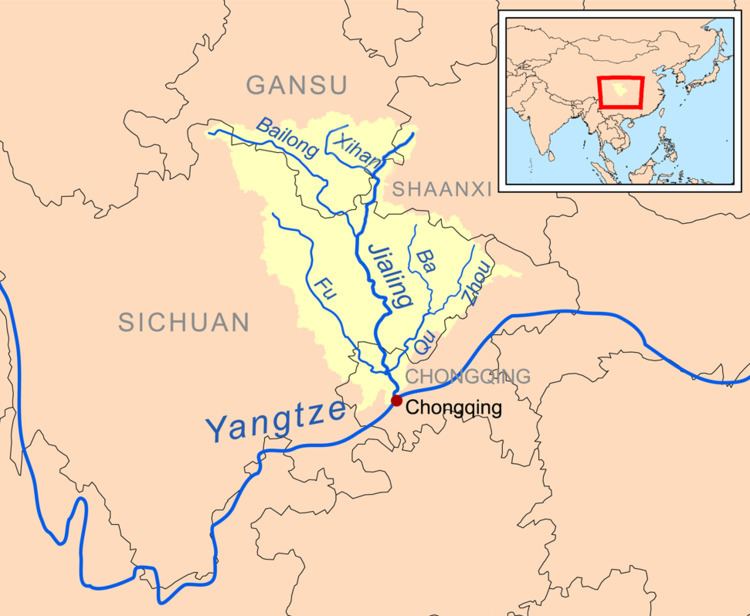 | ||
Linguistic classification Sino-TibetanBurmo-Qiangic ?Qiangic Glottolog naqi1236 (Na–Qiangic)qian1263 (Qiangic) | ||
Qiangic (Ch'iang, Kyang, Tsiang), formerly known as Dzorgaic, is a group of related languages within the Sino-Tibetan language family. They are spoken mainly in Southwest China, including Sichuan, Tibet and Yunnan. Most Qiangic languages are distributed in the prefectures of Ngawa, Garzê, Ya'an, and Liangshan in Sichuan with some in northern Yunnan as well.
Contents
- Sun 1983
- Matisoff 2004
- Thurgood and La Polla 2003
- Sun 2001
- Jacques Michaud 2011
- Chirkova 2012
- Obsolete names
- Distribution
- References
Qiangic speakers are variously classified as part of the Qiang, Tibetan, Pumi, Nakhi and Mongol ethnic groups by the Chinese government.
The extinct Tangut language, the official language of the Western Xia, has been determined to be a Qiangic language.
Sun (1983)
Sun Hongkai (1983) proposes two branches, northern and southern:
Sun groups other, poorly described Qiangic languages as:
Matisoff (2004)
Matisoff (2004) states that Jiarongic is an additional branch:
Thurgood and La Polla (2003)
Thurgood and La Polla (2003) state that the inclusion of Qiang, Prinmi, and Muya is well supported, but that they do not follow Sun's argument for the inclusion of Tangut. Matisoff (2004), however, claims Tangut demonstrates a clear relationship. The unclassified language Baima may also be Qiangic or may retain a Qiangic substratum after speakers shifted to Tibetan.
Some other lesser-known, unclassified Qiangic peoples and languages include the following:
Sun (2001)
Sun Hongkai (2001) groups the Qiangic languages are follows.
Jacques & Michaud (2011)
Guillaume Jacques & Alexis Michaud (2011) argue for a Na–Qiangic branch, which itself forms a Burmo-Qiangic branch together with Lolo–Burmese. Na–Qiangic comprises three primary branches, which are Ersuish (or Ersuic), Naic (or Naxish), and [core] Qiangic. Similarly, David Bradley (2008) also proposed an Eastern Tibeto-Burman branch that includes Burmic (AKA Lolo-Burmese) and Qiangic. The position of Guiqiong is not addressed.
Chirkova (2012)
However, Chirkova (2012) casts doubt on the validity of Qiangic as a coherent branch, instead considering Qiangic to be a diffusion area. Chirkova considers the following four languages to be part of four separate Tibeto-Burman branches.
Both Shixing and Namuzi are both classified as Naic (Naxi) by Jacques & Michaud (2011), but Naic would not be a valid genetic unit Chirkova's classification scheme since Shixing and Namuzi are considered by Chirkova to not be part of a single branch.
Obsolete names
Shafer (1955) and other accounts of the Dzorgaic/Ch'iang branch preserve the names Dzorgai, Kortsè, Thochu, Outer/Outside Man-tze, Pingfang from the turn of the century. The first three were Northern Qiang, and Outside Mantse was Southern Qiang.
When Jiarongic is included as a branch of Qiangic, but distinct from the non-Jiarongic languages, the label "Dzorgaic" may be used for Qiang proper.
Hsi-fan (Xifan) is an ethnic name, meaning essentially 'Tibetan'; the people speak Qiangic or Jiarongic languages such as Qiang, Ergong/Horpa, Ersu, Guiqiong, Shixing, Zhaba, Namuyi, Muya/Minyak, and Jiarong, but not Naxi/Moso, Pumi, or Tangut. The term has not been much used since language surveys of the 1980s resulted in sufficient data for classification.
Distribution
Qiangic languages are spoken mainly in western Sichuan and northwestern Yunnan provinces of China. Sun Hongkai (2013) lists the following watersheds (riverine systems) and the respective Qiangic languages spoken there.
